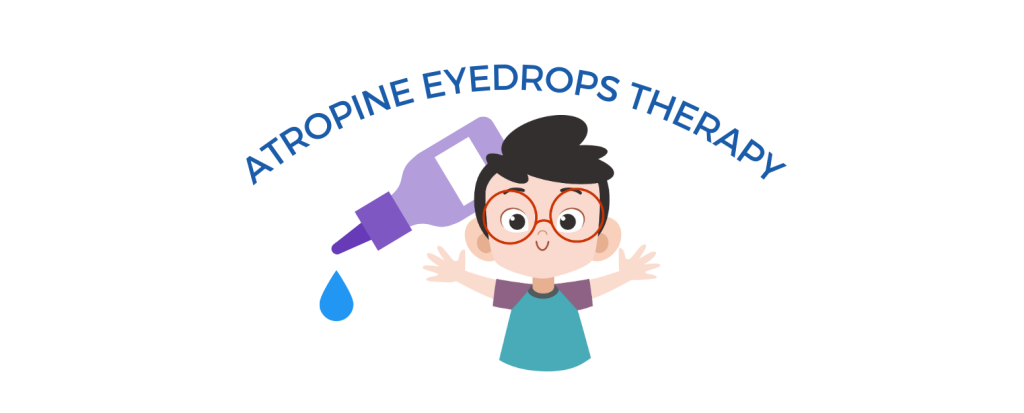
Weekend Atropine Eyedrops Therapy Controls Childhood Myopia

The eyes of today’s children have no time to relax. Reading, writing, watching television, using the computer, surfing the internet or playing video games. Not surprisingly, about half of our primary school children are shortsighted. But there’s good news, childhood myopia control can be controlled through atropine eyedrops therapy.
In the past, eye doctors used atropine eyedrops safely for treating childhood eye conditions such as lazy eye and squints. Recent scientific studies have found that when atropine 1% drops are instilled regularly into the eyes of children, myopia progression can be retarded or stopped.
WHAT IS ATROPINE?
Atropine is a naturally occurring alkaloid found in a certain class of plants (atropa belladonn). It is a strong medicine and the eyedrops should only be prescribed by an eye doctor. But before a child can undergo the atropine eyedrops therapy, a full eye examination done by an eye doctor is mandatory.
Most of the unwanted side effects of atropine therapy are from the pupil dilation and relaxation of the eye’s internal focusing muscles. First-timers will usually complain of glare and be light sensitive for a few days. For this reason, weekend atropine eyedrops therapy is advantageous in that if it is a sunny day, the child can stay indoors and out of the sun. When going out, a cap and clip-on sunshades or sunglasses should be worn. Alternatively, photo-chromic transition lenses that changes from clear to a dark hue when exposed to ultra-violet light rays can be worn. When swimming in the sun, the child should wear tinted swim goggles.
HOW ATROPINE WORKS?
Atropine relaxes the eye’s focusing muscles so that they cannot squeeze hard when doing near vision work. Some people have labelled this effect as “botox for the eyes”. Complaints of blurry vision for reading are usually because the child did not adapt certain changes in reading and writing habits. Firstly, materials should not be held too near but at comfortable reading distances from the eyes. If myopia is mild to moderate, parents can remind the child to simply remove glasses to read. Childhood progressive glasses that work pretty much like adult progressive glasses are often prescribed to help in near vision work. When progressive glasses are worn, parents should remind the child to look through the lower portion of the spectacles lens when reading.
Atropine lingers on for up to two weeks in the eyes but after a few days most of the disturbing vision effects would disappear. A bottle of eyedrops can be kept effective for three months if kept clean in the box and stored in a cool place. Many children, when started on atropine therapy will benefit from an initial significant drop in spectacles prescription. It is therefore important to re-visit your eye doctor after a month of atropine therapy to have the spectacles prescription re-checked and if necessary have new glasses made. If new glasses are made, progressive spectacles are usually recommended. If the child is always out in the sun, then photochromic transition progressive lenses can be considered but they will cost more. If progressive lenses are not well tolerated as often is the case in those suffering from high astigmatism or if cost is an issue, then a “two-spectacles” wear strategy can be adopted. This is where the child wears a pair of slightly under-corrected glasses for home and close work and a stronger one for school.
BENEFITS OF ATROPINE DROPS
With weekend atropine eyedrops therapy, most schoolchildren will find their myopia progression effectively retarded or stopped. However, if significant myopia progression still occurs, then the atropine eyedrops dosage may need to be stepped up to two or three times weekly. Dr Ho experience over ten years has found parents compliance to be high with this regime. In addition, adverse reactions such as chronic red eyes, fever, rashes, rapid heart rate, dry mouth and behavioural disturbances that have been reported to occur uncommonly with daily atropine treatment have not been seen. However, if any of these occur, the treatment must be stopped.
